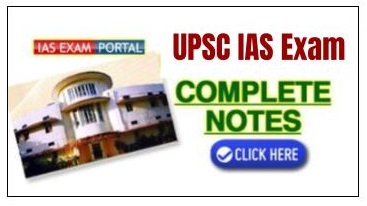Learning to probe early (The Hindu)
Mains Paper 3 : Education
Prelims level: UG research program
Mains level: Services relating to Health, Education, Human Resources
Context
- Addressing to the 106th Indian Science Congress, Prime Minister Narendra Modi
underscored the need for universities to get involved in research.
- India has made considerable strides in achieving a near-perfect enrolment rate
in primary education, it has failed to give higher education as much attention.
- As a consequence, Gross Enrolment Ratio in higher education is 25.8%, against
China’s 48.44% and the U.S.’s 88.84%.
- Mr. Modi’s address alerts us to major lacunae in the education system that
need to be looked at urgently if the higher education system is to meet the
demands of today.
The importance of research
- Research remains a significant weakness in India’s higher education system,
traditionally cocooned in specialised institutes such as the Tata Institute of
Fundamental Research (TIFR), the Homi Bhabha Centre for Science Education, and
the Indian Institute of Science (IISc).
- Unlike the world’s best higher education systems, there is hardly any
interaction between these institutes and teaching universities.
Present conditions of the higher education system in India
- In India, about 80% of the students enroled in higher education are
concentrated in undergraduate (UG) programmes.
- Research and application-oriented education can substantially enhance the
quality of UG education.
- While the concept of UG research is fairly new in India, it is now taken as a
given in many parts of the world.
- Several studies on such programmes have shown a positive impact on students,
such as enhanced learning through mentorship, increased retention, increased
enrolment in graduate education, more prowess in critical thinking, creativity,
problem solving, intellectual independence, and understanding of research
methodologies.
- Research at the UG level increases the aptitude for research-oriented career
options as well as the employability of students.
- Based on the nature of their association and the nuances of a research programme, the faculty can also gain by sharing their research ideas with
students, receive valuable feedback as well as help in the form of assistantship
and apprenticeship.
- Additionally, research also helps the faculty enhance their teaching abilities
and content by upgrading knowledge.
- Introducing and sustaining the culture of research at this level can also help
solve the problem of shortage of faculty, as more students will likely opt for
doctoral and post-doctoral studies and teach in their home country.
- In any sound higher education system, research and teaching should ideally go
together.
Initiatives taken by the government
- The government has also floated two ambitious projects towards internationalising higher education in India: ‘Study in India’ and ‘Institutes
of Eminence’.
- Both these will need institutes to become world class and carry out
high-quality research on campuses.
- Only then will competent faculty as well as doctoral students from across the
world come to India. Internationalisation of campuses is important if India
wants to be in the global university ranking lists and this will not happen
without encouraging an ecosystem that promotes high-quality research.
Some strategic steps
- It given the impediments vis-a vis infrastructure, teachers, funds and
content, the government will need to take strategic steps to roll out policies
to promote UG research programmes.
- The investment in education needs to meet the world standard of at least 6% of
GDP, to upgrade infrastructure, labs and resources, which are essential to carry
out high-quality research.
- The University Grants Commission and other regulatory bodies will have to come
out with a priority list of reputable journals.
- This will rid the country of the problem of bogus journals and publications.
- Research institutes such as TIFR and IISc should mentor some of the
well-performing universities and colleges till they become aware of the nuances
of conducting fair and high-quality research.
- Once capable, these trained institutes can then help the second rung of
colleges and so on.
- There should be planned ways to embed research in UG curriculum.
- Due to limitations in curriculum and the practice of rote learning, most
students in India, even at the Masters level, graduate without having attempted
an original piece of research or dissertation.
- The UGC should make it compulsory for students to submit at least a 5,000-word
research paper that should be assessed just as publication in serious research
journals are.
- Unless students are made aware of the value of research from an early stage,
they will not recognise the true value of higher education.
Conclusion
- The status quo in education has resulted in education that is not only
substandard but also fails to open inquiring minds to the world of research.
- India must be innovative in its approch if its demographic dividend is to be
tapped into.
- Otherwise, what Mr. Modi said will remain a quotable quote.

